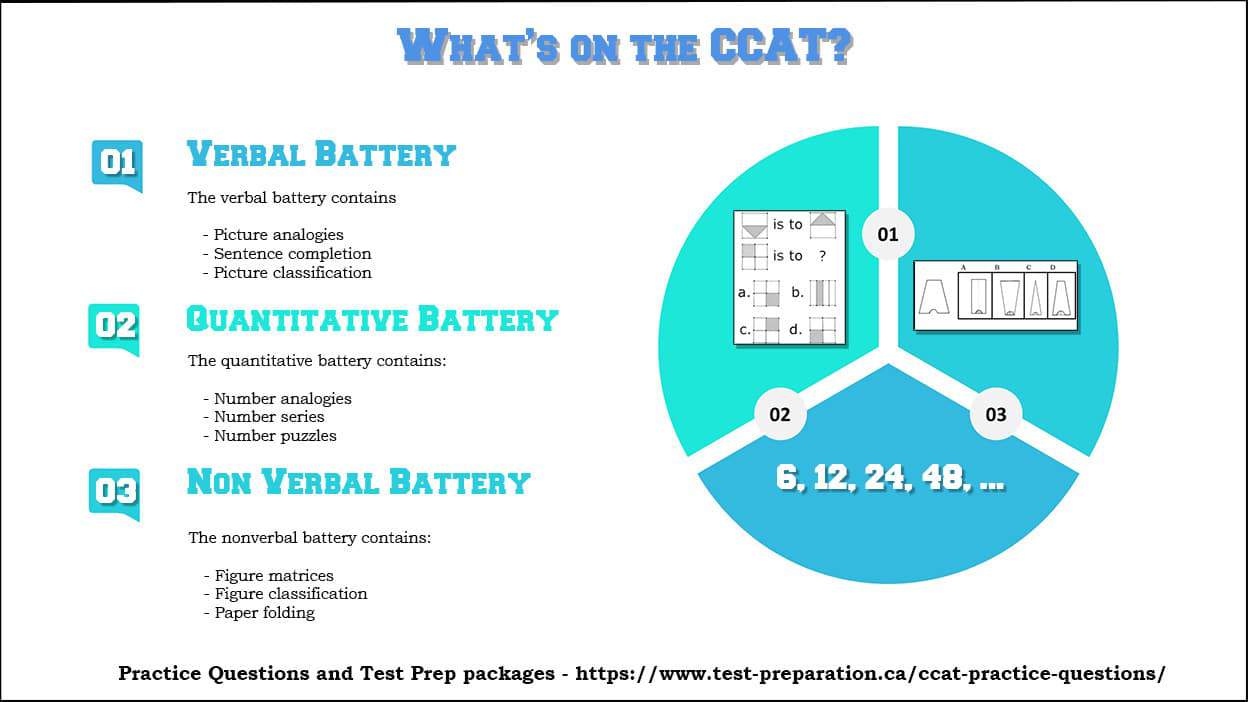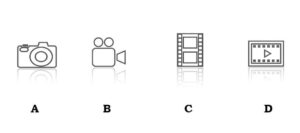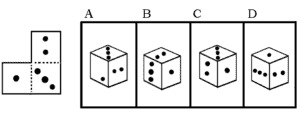CCAT Grade 6 Level 12
Enrollment in a gifted and talented program, students must sit for the Canadian Cognitive Abilities Test (CCAT Level 12) This test is designed to determine how well a 12-year-old can reason and solve unfamiliar situations. The beauty of the test is that it does not test how well a child memorizes information or how well they are doing in school. The CCAT Level 12 is built to assess your child’s ability to see patterns and relationships between shapes, as well as other cognitive exercises.
What’s on the Test
Grade 6 CCAT has 176 questions, covering three sections, or batteries, covering nonverbal, verbal, and quantitative abilities. Every battery is further subdivided into three subsections, for a total of nine subsections. Your child’s school will determine whether the candidates sit for the three batteries in once session, or separately.
Verbal Battery
Verbal Analogies
Students are given a pair of words, and must identify the relationship, then apply that relationship. Verbal Analogies Practice
Verbal Classification
Candidates will have three words in a category. Students must identify the category or relationship, and select a word they believe matches the category.
Sentence Completion
Students are given a sentence missing one word. Students must read the sentence and choose a word from the multiple choices that completes the sentence. Sentence Completion Practice
Quantitative Battery
Number Series
Here students are given a series of numbers with a quantitative relationship. They must identify the relationship and select a number that completes the series. Number Series Practice
Number puzzles
Students are required to solve a mathematical equation with one number missing. Number Puzzle Practice
Number Analogies
Students are given a pair of numbers, and a single number. Students must identify the relationship in the first set and apply that rule to complete the second pair.
Click here for CCAT Grade 6 practice questions and complete test package
Nonverbal Battery
Figure Matrices
Students are given a 2 X 2 matrix containing three shapes with the last box empty. Students must determine the relationship between the first two shapes, and select the correct shape to complete the second pair.
Figure Classification
Just as in the Verbal Classification, this subsection asks students to identify how three different shapes are classified, then select the fourth shape to complete the figure.
Paper Folding
Students are given a paper with fold marks, or holes. Students must visualize how the paper will look once folded.
CCAT Grade 6 Score Report
The CCAT level 12 Score Report has three scores detailing results of the test and the general cognitive ability of each student. Each score is the sum of the results from the quantitative, nonverbal, and verbal sections. Each report will have an Age Percentile Rank (APR) score that ranks all candidates in a specific age group, a Grade Percentile Rank (GPR) that compares students according to other candidates on their grades, and a Stanine (S) score. A stanine score shows every student’s learning aptitude and is set between 1 and 9 with 9 being the highest possible score, 5 being average, and 1 being the lowest. APR ranks 12-year-old candidates within their age group.
Test Tips
- Use the scratch paper provided effectively. A scratch paper is an important tool for students who prefer thinking out loud. Although students are not allowed to talk during the exam, they have permission to write down their thought processes. Ensure that you familiarize your child with scratch papers as they practice by letting them note down their thinking.
- Do not spend a lot of time on a single question. Students need to answer all the questions in a reasonable amount of time as the exams are timed. Encourage your child to spread their time on all questions evenly. When handling difficult questions, advise them to give the first answer they think of and come back to the question later if time allows it.
Date Published: Wednesday, April 27th, 2022
Date Modified: Monday, January 22nd, 2024



